Fishes
Media

Species Types
Scientific Name
Ichthyomyzon castaneus
Description
The chestnut lamprey is an eel-like fish that many people find interesting because it's a vampire to other fish. Adults have a well-developed, rasplike oral disc, seven porelike gill openings, no paired fins, and a single nostril.
Media

Species Types
Scientific Name
Anguilla rostrata
Description
The American eel is considered an uncommon catch by Missouri sport anglers. This species is known to take natural baits and rarely takes artificial baits.
Media
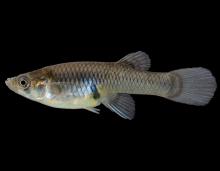
Species Types
Scientific Name
Gambusia affinis
Description
Mosquitofish resemble plain-looking guppies and, like guppies, bear live young instead of eggs. They prefer shallow, marginal areas and sluggish streams with warm water and abundant vegetative cover. They swim near the surface.
Media
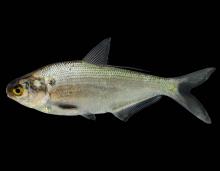
Species Types
Scientific Name
Dorosoma cepedianum
Description
The gizzard shad is one of the most common and abundant fish in Missouri. In Missouri, this schooling fish occurs in every major stream system and is most abundant in reservoirs and large rivers.
Media

Species Types
Scientific Name
Dorosoma petenense
Description
The threadfin shad occurs in the Mississippi River and its tributaries. It also occurs in mainstem reservoirs of the White River Basin and in Montrose Lake and the South Grand River in Henry County.
Media

Species Types
Scientific Name
Alosa chrysochloris
Description
The skipjack herring is an active fish, moving about continuously in large schools. It probably occurs at least occasionally in most of the large rivers of the state where its migrations are not blocked by dams.
Media
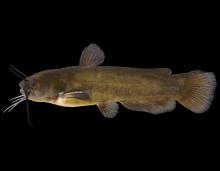
Species Types
Scientific Name
Ameiurus natalis
Description
The yellow bullhead is widespread in Missouri. It is the most common bullhead catfish in the Ozarks and Bootheel lowlands. It has white chin barbels, and the edge of its tail fin is straight, not notched.
Media
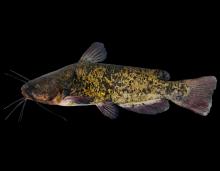
Species Types
Scientific Name
Ameiurus nebulosus
Description
In Missouri, the brown bullhead occurs in quiet, clear waters in wildlife refuges in southeast Missouri. Elsewhere in the state, it is stocked and possibly escapes. It has mottled sides and an elongated barbel at the corner of the mouth.
Media

Species Types
Scientific Name
Pylodictis olivaris
Description
The flathead catfish has a broad, flattened head with small eyes on top. The lower jaw projects beyond the upper jaw. It occurs in most of the large streams of Missouri, preferring places with a slow current.
Media
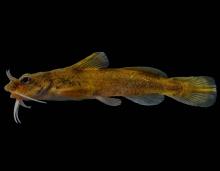
Species Types
Scientific Name
Noturus eleutherus
Description
The mountain madtom is rare and endangered in Missouri. This small catfish has been recorded from only a few locations in the southeastern portion of the state.
See Also


Media

Species Types
Scientific Name
Amphiuma tridactylum
Description
The three-toed amphiuma is an eel-like, completely aquatic salamander. It has very small forelimbs and hind limbs, each with three tiny toes. In Missouri it’s found only in the Bootheel region.
Media

Species Types
Scientific Name
Siren intermedia nettingi
Description
The western lesser siren is an eel-like, aquatic salamander with external gills, small eyes, small forelimbs with four toes, and no hind limbs. In Missouri, it’s found mostly in the Bootheel and northward in counties near the Mississippi River.
About Fishes in Missouri
Missouri has more than 200 kinds of fish, more than are found in most neighboring states. Fishes live in water, breathe with gills, and have fins instead of legs. Most are covered with scales. Most fish in Missouri “look” like fish and could never be confused with anything else. True, lampreys and eels have snakelike bodies — but they also have fins and smooth, slimy skin, which snakes do not.





















